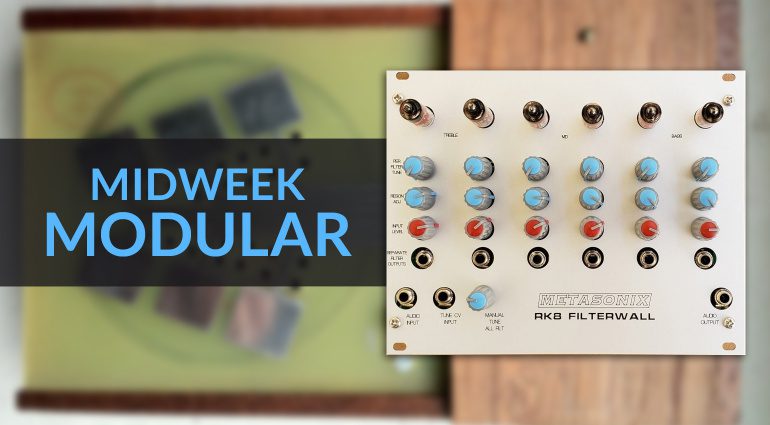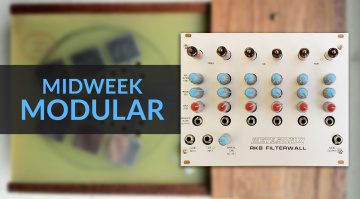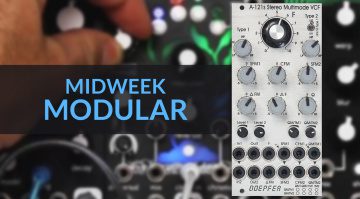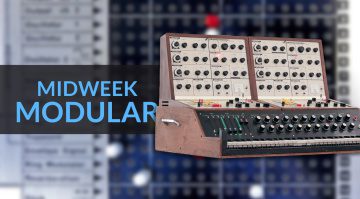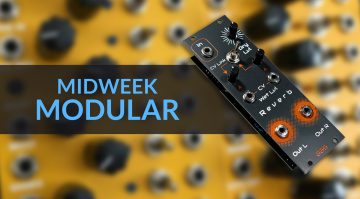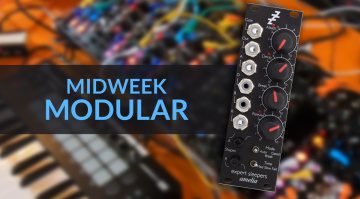Midweek Modular: Cracklebox, Turing and a wall of filters
This week we rediscover Michel Waiswisz’s Cracklebox, quantise a Turing Machine, get lost in tape delay and climb a dangerous Filterwall of preconceptions. Welcome to Midweek Modular.
Midweek Modular
If the world of electronic music was a pair of trousers and I was a ferret, these would be the tasty morsels that took my fancy around the hairy legs of modular.
ADDAC System Michel Waiswisz’s Cracklebox
The original Cracklebox, designed by Michel Waiswisz, was a portable, battery-powered, handheld device that generated sound. It had an oscillator inside based on a toy piano circuit. Sound was triggered and explored by connecting the touch plates with your fingers which routed the resulting crackle to the integrated speaker. The ADDAC708 brings this 1970s machine back to life in Eurorack form.
Part of the functionality was to mess with the power supply. So to keep the Cracklebox isolated from any potential shocks from the Eurorack power supply, it includes a front-accessible 9v battery compartment. The speaker has been replaced with a transformer and an output to route through your system. You have control over output gain and power starvation. You can use the output as audio, gate or CV; experimentation is the key.
There’s no video yet of the ADDAC708 working, but apparently, it goes a bit like this:
You are currently viewing a placeholder content from YouTube. To access the actual content, click the button below. Please note that doing so will share data with third-party providers.
Zlosynth Instruments Kaseta
This is a luxuriously wide tape delay with saturation and what they call a feedback sculptor. Kaseta is inspired but reel-to-reel machines and simulates magnetic hysteresis to induce some warm saturation. It has four delay lines and offers a bit of wow and flutter control.
You can record up to 5 minutes of audio and loop it through the four reading heads. The delays can be free-flowing or synced, but it can also generate a trigger sequence and has an inbuilt VCO for internal modulation.
It sounds like the kind of module you could lose yourself in for hours, playing with feedback, dialling in the drive and feeling the vibes.
You are currently viewing a placeholder content from YouTube. To access the actual content, click the button below. Please note that doing so will share data with third-party providers.
- Zlosynth website.
EMW T-Sequencer
This is an interesting take on one of the most beloved modules on the scene; the Music Thing Turing Machine. The Turing Machine generates apparently random voltages and pulses that you can let flow or grab into loops. When used for sequencing, it’s usually found plugged into a Quantizer module, so EMW thought it might be good to build a quantizer into the module itself. And so we have the T-Sequencer.
There’s a bit more going on than that. EMW has squeezed in some additional features, like a regeneration trigger button, octave selection, forward/reverse direction and some extra CV control.
The original Turing machine is a very beautiful device that appears to be capable of extraordinary melodies and influence. The T-Sequencer definitely builds on that idea, and I just hope the “improvements” don’t somehow lessen the magic.
You are currently viewing a placeholder content from YouTube. To access the actual content, click the button below. Please note that doing so will share data with third-party providers.
- EMW website.
Metasonix RK8 Filterwall
Now, be careful because this module comes with a warning. Metasonix instructs us to leave our preconceptions behind and accept that this module is nothing like anything we’ve ever seen before. That’s very intriguing, although they should really back it up with some video of it working so that we can be a witness to its unique qualities.
Throwing caution to the wind, I can tell you that the RK8 Filterwall is a bank of 8 bandpass filters formed through vacuum tubes and will sound pretty gritty. There’s no expectation of volt/octave self-oscillation or a clean signal chain; this is going to be grungy and fabulous.
Each filter has a cutoff knob, resonance and input level control. They all have their own output so you can take your signal from any part of the filter bank. There is a master tune control that will move all the filters at once for a massive and probably epic sweep.
It looks amazing. How does it sound? Well, I found this slightly dodgy lo-fi video that gives us some idea. It should be noted that these are hand-made modules using hand-matched tubes, and it will cost you $1,368 to have a go.
You are currently viewing a placeholder content from YouTube. To access the actual content, click the button below. Please note that doing so will share data with third-party providers.
- Metasonix website.
 4,2 / 5,0 |
4,2 / 5,0 | 